-
EXECUTIVE SUMMARY
-
Market Overview
-
Key Findings
-
Market Segmentation
-
Competitive Landscape
-
Challenges and Opportunities
-
Future Outlook
-
MARKET INTRODUCTION
-
Definition
-
Scope of the study
- Research Objective
- Assumption
- Limitations
-
RESEARCH METHODOLOGY
-
Overview
-
Data Mining
-
Secondary Research
-
Primary Research
- Primary Interviews and Information Gathering Process
- Breakdown of Primary Respondents
-
Forecasting Model
-
Market Size Estimation
- Bottom-Up Approach
- Top-Down Approach
-
Data Triangulation
-
Validation
-
MARKET DYNAMICS
-
Overview
-
Drivers
-
Restraints
-
Opportunities
-
MARKET FACTOR ANALYSIS
-
Value chain Analysis
-
Porter's Five Forces Analysis
- Bargaining Power of Suppliers
- Bargaining Power of Buyers
- Threat of New Entrants
- Threat of Substitutes
- Intensity of Rivalry
-
COVID-19 Impact Analysis
- Market Impact Analysis
- Regional Impact
- Opportunity and Threat Analysis
-
MEDICAL SUCTION DEVICES MARKET, BY DEVICE TYPE (USD BILLION)
-
Portable Suction Devices
-
Wall-Mounted Suction Devices
-
Suction Accessories
-
MEDICAL SUCTION DEVICES MARKET, BY APPLICATION (USD BILLION)
-
Surgical Procedures
-
Chronic Respiratory Diseases
-
Emergency Care
-
Dental Procedures
-
MEDICAL SUCTION DEVICES MARKET, BY END USE (USD BILLION)
-
Hospitals
-
Ambulatory Surgical Centers
-
Home Care Settings
-
Dental Clinics
-
MEDICAL SUCTION DEVICES MARKET, BY TECHNOLOGY (USD BILLION)
-
Electric Suction Devices
-
Manual Suction Devices
-
Battery-Operated Suction Devices
-
MEDICAL SUCTION DEVICES MARKET, BY REGIONAL (USD BILLION)
-
North America
- US
- Canada
-
Europe
- Germany
- UK
- France
- Russia
- Italy
- Spain
- Rest of Europe
-
APAC
- China
- India
- Japan
- South Korea
- Malaysia
- Thailand
- Indonesia
- Rest of APAC
-
South America
- Brazil
- Mexico
- Argentina
- Rest of South America
-
MEA
- GCC Countries
- South Africa
- Rest of MEA
-
COMPETITIVE LANDSCAPE
-
Overview
-
Competitive Analysis
-
Market share Analysis
-
Major Growth Strategy in the Medical Suction Devices Market
-
Competitive Benchmarking
-
Leading Players in Terms of Number of Developments in the Medical Suction Devices Market
-
Key developments and growth strategies
- New Product Launch/Service Deployment
- Merger & Acquisitions
- Joint Ventures
-
Major Players Financial Matrix
- Sales and Operating Income
- Major Players R&D Expenditure. 2023
-
COMPANY PROFILES
-
Smiths Medical
- Financial Overview
- Products Offered
- Key Developments
- SWOT Analysis
- Key Strategies
-
Atrium Medical
- Financial Overview
- Products Offered
- Key Developments
- SWOT Analysis
- Key Strategies
-
Amsino International
- Financial Overview
- Products Offered
- Key Developments
- SWOT Analysis
- Key Strategies
-
Ricoh
- Financial Overview
- Products Offered
- Key Developments
- SWOT Analysis
- Key Strategies
-
Medtronic
- Financial Overview
- Products Offered
- Key Developments
- SWOT Analysis
- Key Strategies
-
Olympus
- Financial Overview
- Products Offered
- Key Developments
- SWOT Analysis
- Key Strategies
-
Zoll Medical
- Financial Overview
- Products Offered
- Key Developments
- SWOT Analysis
- Key Strategies
-
Ventilatory Solutions
- Financial Overview
- Products Offered
- Key Developments
- SWOT Analysis
- Key Strategies
-
BD
- Financial Overview
- Products Offered
- Key Developments
- SWOT Analysis
- Key Strategies
-
Johnson and Johnson
- Financial Overview
- Products Offered
- Key Developments
- SWOT Analysis
- Key Strategies
-
Huntleigh Healthcare
- Financial Overview
- Products Offered
- Key Developments
- SWOT Analysis
- Key Strategies
-
Conmed
- Financial Overview
- Products Offered
- Key Developments
- SWOT Analysis
- Key Strategies
-
Stryker
- Financial Overview
- Products Offered
- Key Developments
- SWOT Analysis
- Key Strategies
-
Vyaire Medical
- Financial Overview
- Products Offered
- Key Developments
- SWOT Analysis
- Key Strategies
-
APPENDIX
-
References
-
Related Reports
-
LIST OF TABLES
-
LIST OF ASSUMPTIONS
-
NORTH AMERICA MEDICAL SUCTION DEVICES MARKET SIZE ESTIMATES & FORECAST, BY DEVICE TYPE, 2019-2032 (USD BILLIONS)
-
NORTH AMERICA MEDICAL SUCTION DEVICES MARKET SIZE ESTIMATES & FORECAST, BY APPLICATION, 2019-2032 (USD BILLIONS)
-
NORTH AMERICA MEDICAL SUCTION DEVICES MARKET SIZE ESTIMATES & FORECAST, BY END USE, 2019-2032 (USD BILLIONS)
-
NORTH AMERICA MEDICAL SUCTION DEVICES MARKET SIZE ESTIMATES & FORECAST, BY TECHNOLOGY, 2019-2032 (USD BILLIONS)
-
NORTH AMERICA MEDICAL SUCTION DEVICES MARKET SIZE ESTIMATES & FORECAST, BY REGIONAL, 2019-2032 (USD BILLIONS)
-
US MEDICAL SUCTION DEVICES MARKET SIZE ESTIMATES & FORECAST, BY DEVICE TYPE, 2019-2032 (USD BILLIONS)
-
US MEDICAL SUCTION DEVICES MARKET SIZE ESTIMATES & FORECAST, BY APPLICATION, 2019-2032 (USD BILLIONS)
-
US MEDICAL SUCTION DEVICES MARKET SIZE ESTIMATES & FORECAST, BY END USE, 2019-2032 (USD BILLIONS)
-
US MEDICAL SUCTION DEVICES MARKET SIZE ESTIMATES & FORECAST, BY TECHNOLOGY, 2019-2032 (USD BILLIONS)
-
US MEDICAL SUCTION DEVICES MARKET SIZE ESTIMATES & FORECAST, BY REGIONAL, 2019-2032 (USD BILLIONS)
-
CANADA MEDICAL SUCTION DEVICES MARKET SIZE ESTIMATES & FORECAST, BY DEVICE TYPE, 2019-2032 (USD BILLIONS)
-
CANADA MEDICAL SUCTION DEVICES MARKET SIZE ESTIMATES & FORECAST, BY APPLICATION, 2019-2032 (USD BILLIONS)
-
CANADA MEDICAL SUCTION DEVICES MARKET SIZE ESTIMATES & FORECAST, BY END USE, 2019-2032 (USD BILLIONS)
-
CANADA MEDICAL SUCTION DEVICES MARKET SIZE ESTIMATES & FORECAST, BY TECHNOLOGY, 2019-2032 (USD BILLIONS)
-
CANADA MEDICAL SUCTION DEVICES MARKET SIZE ESTIMATES & FORECAST, BY REGIONAL, 2019-2032 (USD BILLIONS)
-
EUROPE MEDICAL SUCTION DEVICES MARKET SIZE ESTIMATES & FORECAST, BY DEVICE TYPE, 2019-2032 (USD BILLIONS)
-
EUROPE MEDICAL SUCTION DEVICES MARKET SIZE ESTIMATES & FORECAST, BY APPLICATION, 2019-2032 (USD BILLIONS)
-
EUROPE MEDICAL SUCTION DEVICES MARKET SIZE ESTIMATES & FORECAST, BY END USE, 2019-2032 (USD BILLIONS)
-
EUROPE MEDICAL SUCTION DEVICES MARKET SIZE ESTIMATES & FORECAST, BY TECHNOLOGY, 2019-2032 (USD BILLIONS)
-
EUROPE MEDICAL SUCTION DEVICES MARKET SIZE ESTIMATES & FORECAST, BY REGIONAL, 2019-2032 (USD BILLIONS)
-
GERMANY MEDICAL SUCTION DEVICES MARKET SIZE ESTIMATES & FORECAST, BY DEVICE TYPE, 2019-2032 (USD BILLIONS)
-
GERMANY MEDICAL SUCTION DEVICES MARKET SIZE ESTIMATES & FORECAST, BY APPLICATION, 2019-2032 (USD BILLIONS)
-
GERMANY MEDICAL SUCTION DEVICES MARKET SIZE ESTIMATES & FORECAST, BY END USE, 2019-2032 (USD BILLIONS)
-
GERMANY MEDICAL SUCTION DEVICES MARKET SIZE ESTIMATES & FORECAST, BY TECHNOLOGY, 2019-2032 (USD BILLIONS)
-
GERMANY MEDICAL SUCTION DEVICES MARKET SIZE ESTIMATES & FORECAST, BY REGIONAL, 2019-2032 (USD BILLIONS)
-
UK MEDICAL SUCTION DEVICES MARKET SIZE ESTIMATES & FORECAST, BY DEVICE TYPE, 2019-2032 (USD BILLIONS)
-
UK MEDICAL SUCTION DEVICES MARKET SIZE ESTIMATES & FORECAST, BY APPLICATION, 2019-2032 (USD BILLIONS)
-
UK MEDICAL SUCTION DEVICES MARKET SIZE ESTIMATES & FORECAST, BY END USE, 2019-2032 (USD BILLIONS)
-
UK MEDICAL SUCTION DEVICES MARKET SIZE ESTIMATES & FORECAST, BY TECHNOLOGY, 2019-2032 (USD BILLIONS)
-
UK MEDICAL SUCTION DEVICES MARKET SIZE ESTIMATES & FORECAST, BY REGIONAL, 2019-2032 (USD BILLIONS)
-
FRANCE MEDICAL SUCTION DEVICES MARKET SIZE ESTIMATES & FORECAST, BY DEVICE TYPE, 2019-2032 (USD BILLIONS)
-
FRANCE MEDICAL SUCTION DEVICES MARKET SIZE ESTIMATES & FORECAST, BY APPLICATION, 2019-2032 (USD BILLIONS)
-
FRANCE MEDICAL SUCTION DEVICES MARKET SIZE ESTIMATES & FORECAST, BY END USE, 2019-2032 (USD BILLIONS)
-
FRANCE MEDICAL SUCTION DEVICES MARKET SIZE ESTIMATES & FORECAST, BY TECHNOLOGY, 2019-2032 (USD BILLIONS)
-
FRANCE MEDICAL SUCTION DEVICES MARKET SIZE ESTIMATES & FORECAST, BY REGIONAL, 2019-2032 (USD BILLIONS)
-
RUSSIA MEDICAL SUCTION DEVICES MARKET SIZE ESTIMATES & FORECAST, BY DEVICE TYPE, 2019-2032 (USD BILLIONS)
-
RUSSIA MEDICAL SUCTION DEVICES MARKET SIZE ESTIMATES & FORECAST, BY APPLICATION, 2019-2032 (USD BILLIONS)
-
RUSSIA MEDICAL SUCTION DEVICES MARKET SIZE ESTIMATES & FORECAST, BY END USE, 2019-2032 (USD BILLIONS)
-
RUSSIA MEDICAL SUCTION DEVICES MARKET SIZE ESTIMATES & FORECAST, BY TECHNOLOGY, 2019-2032 (USD BILLIONS)
-
RUSSIA MEDICAL SUCTION DEVICES MARKET SIZE ESTIMATES & FORECAST, BY REGIONAL, 2019-2032 (USD BILLIONS)
-
ITALY MEDICAL SUCTION DEVICES MARKET SIZE ESTIMATES & FORECAST, BY DEVICE TYPE, 2019-2032 (USD BILLIONS)
-
ITALY MEDICAL SUCTION DEVICES MARKET SIZE ESTIMATES & FORECAST, BY APPLICATION, 2019-2032 (USD BILLIONS)
-
ITALY MEDICAL SUCTION DEVICES MARKET SIZE ESTIMATES & FORECAST, BY END USE, 2019-2032 (USD BILLIONS)
-
ITALY MEDICAL SUCTION DEVICES MARKET SIZE ESTIMATES & FORECAST, BY TECHNOLOGY, 2019-2032 (USD BILLIONS)
-
ITALY MEDICAL SUCTION DEVICES MARKET SIZE ESTIMATES & FORECAST, BY REGIONAL, 2019-2032 (USD BILLIONS)
-
SPAIN MEDICAL SUCTION DEVICES MARKET SIZE ESTIMATES & FORECAST, BY DEVICE TYPE, 2019-2032 (USD BILLIONS)
-
SPAIN MEDICAL SUCTION DEVICES MARKET SIZE ESTIMATES & FORECAST, BY APPLICATION, 2019-2032 (USD BILLIONS)
-
SPAIN MEDICAL SUCTION DEVICES MARKET SIZE ESTIMATES & FORECAST, BY END USE, 2019-2032 (USD BILLIONS)
-
SPAIN MEDICAL SUCTION DEVICES MARKET SIZE ESTIMATES & FORECAST, BY TECHNOLOGY, 2019-2032 (USD BILLIONS)
-
SPAIN MEDICAL SUCTION DEVICES MARKET SIZE ESTIMATES & FORECAST, BY REGIONAL, 2019-2032 (USD BILLIONS)
-
REST OF EUROPE MEDICAL SUCTION DEVICES MARKET SIZE ESTIMATES & FORECAST, BY DEVICE TYPE, 2019-2032 (USD BILLIONS)
-
REST OF EUROPE MEDICAL SUCTION DEVICES MARKET SIZE ESTIMATES & FORECAST, BY APPLICATION, 2019-2032 (USD BILLIONS)
-
REST OF EUROPE MEDICAL SUCTION DEVICES MARKET SIZE ESTIMATES & FORECAST, BY END USE, 2019-2032 (USD BILLIONS)
-
REST OF EUROPE MEDICAL SUCTION DEVICES MARKET SIZE ESTIMATES & FORECAST, BY TECHNOLOGY, 2019-2032 (USD BILLIONS)
-
REST OF EUROPE MEDICAL SUCTION DEVICES MARKET SIZE ESTIMATES & FORECAST, BY REGIONAL, 2019-2032 (USD BILLIONS)
-
APAC MEDICAL SUCTION DEVICES MARKET SIZE ESTIMATES & FORECAST, BY DEVICE TYPE, 2019-2032 (USD BILLIONS)
-
APAC MEDICAL SUCTION DEVICES MARKET SIZE ESTIMATES & FORECAST, BY APPLICATION, 2019-2032 (USD BILLIONS)
-
APAC MEDICAL SUCTION DEVICES MARKET SIZE ESTIMATES & FORECAST, BY END USE, 2019-2032 (USD BILLIONS)
-
APAC MEDICAL SUCTION DEVICES MARKET SIZE ESTIMATES & FORECAST, BY TECHNOLOGY, 2019-2032 (USD BILLIONS)
-
APAC MEDICAL SUCTION DEVICES MARKET SIZE ESTIMATES & FORECAST, BY REGIONAL, 2019-2032 (USD BILLIONS)
-
CHINA MEDICAL SUCTION DEVICES MARKET SIZE ESTIMATES & FORECAST, BY DEVICE TYPE, 2019-2032 (USD BILLIONS)
-
CHINA MEDICAL SUCTION DEVICES MARKET SIZE ESTIMATES & FORECAST, BY APPLICATION, 2019-2032 (USD BILLIONS)
-
CHINA MEDICAL SUCTION DEVICES MARKET SIZE ESTIMATES & FORECAST, BY END USE, 2019-2032 (USD BILLIONS)
-
CHINA MEDICAL SUCTION DEVICES MARKET SIZE ESTIMATES & FORECAST, BY TECHNOLOGY, 2019-2032 (USD BILLIONS)
-
CHINA MEDICAL SUCTION DEVICES MARKET SIZE ESTIMATES & FORECAST, BY REGIONAL, 2019-2032 (USD BILLIONS)
-
INDIA MEDICAL SUCTION DEVICES MARKET SIZE ESTIMATES & FORECAST, BY DEVICE TYPE, 2019-2032 (USD BILLIONS)
-
INDIA MEDICAL SUCTION DEVICES MARKET SIZE ESTIMATES & FORECAST, BY APPLICATION, 2019-2032 (USD BILLIONS)
-
INDIA MEDICAL SUCTION DEVICES MARKET SIZE ESTIMATES & FORECAST, BY END USE, 2019-2032 (USD BILLIONS)
-
INDIA MEDICAL SUCTION DEVICES MARKET SIZE ESTIMATES & FORECAST, BY TECHNOLOGY, 2019-2032 (USD BILLIONS)
-
INDIA MEDICAL SUCTION DEVICES MARKET SIZE ESTIMATES & FORECAST, BY REGIONAL, 2019-2032 (USD BILLIONS)
-
JAPAN MEDICAL SUCTION DEVICES MARKET SIZE ESTIMATES & FORECAST, BY DEVICE TYPE, 2019-2032 (USD BILLIONS)
-
JAPAN MEDICAL SUCTION DEVICES MARKET SIZE ESTIMATES & FORECAST, BY APPLICATION, 2019-2032 (USD BILLIONS)
-
JAPAN MEDICAL SUCTION DEVICES MARKET SIZE ESTIMATES & FORECAST, BY END USE, 2019-2032 (USD BILLIONS)
-
JAPAN MEDICAL SUCTION DEVICES MARKET SIZE ESTIMATES & FORECAST, BY TECHNOLOGY, 2019-2032 (USD BILLIONS)
-
JAPAN MEDICAL SUCTION DEVICES MARKET SIZE ESTIMATES & FORECAST, BY REGIONAL, 2019-2032 (USD BILLIONS)
-
SOUTH KOREA MEDICAL SUCTION DEVICES MARKET SIZE ESTIMATES & FORECAST, BY DEVICE TYPE, 2019-2032 (USD BILLIONS)
-
SOUTH KOREA MEDICAL SUCTION DEVICES MARKET SIZE ESTIMATES & FORECAST, BY APPLICATION, 2019-2032 (USD BILLIONS)
-
SOUTH KOREA MEDICAL SUCTION DEVICES MARKET SIZE ESTIMATES & FORECAST, BY END USE, 2019-2032 (USD BILLIONS)
-
SOUTH KOREA MEDICAL SUCTION DEVICES MARKET SIZE ESTIMATES & FORECAST, BY TECHNOLOGY, 2019-2032 (USD BILLIONS)
-
SOUTH KOREA MEDICAL SUCTION DEVICES MARKET SIZE ESTIMATES & FORECAST, BY REGIONAL, 2019-2032 (USD BILLIONS)
-
MALAYSIA MEDICAL SUCTION DEVICES MARKET SIZE ESTIMATES & FORECAST, BY DEVICE TYPE, 2019-2032 (USD BILLIONS)
-
MALAYSIA MEDICAL SUCTION DEVICES MARKET SIZE ESTIMATES & FORECAST, BY APPLICATION, 2019-2032 (USD BILLIONS)
-
MALAYSIA MEDICAL SUCTION DEVICES MARKET SIZE ESTIMATES & FORECAST, BY END USE, 2019-2032 (USD BILLIONS)
-
MALAYSIA MEDICAL SUCTION DEVICES MARKET SIZE ESTIMATES & FORECAST, BY TECHNOLOGY, 2019-2032 (USD BILLIONS)
-
MALAYSIA MEDICAL SUCTION DEVICES MARKET SIZE ESTIMATES & FORECAST, BY REGIONAL, 2019-2032 (USD BILLIONS)
-
THAILAND MEDICAL SUCTION DEVICES MARKET SIZE ESTIMATES & FORECAST, BY DEVICE TYPE, 2019-2032 (USD BILLIONS)
-
THAILAND MEDICAL SUCTION DEVICES MARKET SIZE ESTIMATES & FORECAST, BY APPLICATION, 2019-2032 (USD BILLIONS)
-
THAILAND MEDICAL SUCTION DEVICES MARKET SIZE ESTIMATES & FORECAST, BY END USE, 2019-2032 (USD BILLIONS)
-
THAILAND MEDICAL SUCTION DEVICES MARKET SIZE ESTIMATES & FORECAST, BY TECHNOLOGY, 2019-2032 (USD BILLIONS)
-
THAILAND MEDICAL SUCTION DEVICES MARKET SIZE ESTIMATES & FORECAST, BY REGIONAL, 2019-2032 (USD BILLIONS)
-
INDONESIA MEDICAL SUCTION DEVICES MARKET SIZE ESTIMATES & FORECAST, BY DEVICE TYPE, 2019-2032 (USD BILLIONS)
-
INDONESIA MEDICAL SUCTION DEVICES MARKET SIZE ESTIMATES & FORECAST, BY APPLICATION, 2019-2032 (USD BILLIONS)
-
INDONESIA MEDICAL SUCTION DEVICES MARKET SIZE ESTIMATES & FORECAST, BY END USE, 2019-2032 (USD BILLIONS)
-
INDONESIA MEDICAL SUCTION DEVICES MARKET SIZE ESTIMATES & FORECAST, BY TECHNOLOGY, 2019-2032 (USD BILLIONS)
-
INDONESIA MEDICAL SUCTION DEVICES MARKET SIZE ESTIMATES & FORECAST, BY REGIONAL, 2019-2032 (USD BILLIONS)
-
REST OF APAC MEDICAL SUCTION DEVICES MARKET SIZE ESTIMATES & FORECAST, BY DEVICE TYPE, 2019-2032 (USD BILLIONS)
-
REST OF APAC MEDICAL SUCTION DEVICES MARKET SIZE ESTIMATES & FORECAST, BY APPLICATION, 2019-2032 (USD BILLIONS)
-
REST OF APAC MEDICAL SUCTION DEVICES MARKET SIZE ESTIMATES & FORECAST, BY END USE, 2019-2032 (USD BILLIONS)
-
REST OF APAC MEDICAL SUCTION DEVICES MARKET SIZE ESTIMATES & FORECAST, BY TECHNOLOGY, 2019-2032 (USD BILLIONS)
-
REST OF APAC MEDICAL SUCTION DEVICES MARKET SIZE ESTIMATES & FORECAST, BY REGIONAL, 2019-2032 (USD BILLIONS)
-
SOUTH AMERICA MEDICAL SUCTION DEVICES MARKET SIZE ESTIMATES & FORECAST, BY DEVICE TYPE, 2019-2032 (USD BILLIONS)
-
SOUTH AMERICA MEDICAL SUCTION DEVICES MARKET SIZE ESTIMATES & FORECAST, BY APPLICATION, 2019-2032 (USD BILLIONS)
-
SOUTH AMERICA MEDICAL SUCTION DEVICES MARKET SIZE ESTIMATES & FORECAST, BY END USE, 2019-2032 (USD BILLIONS)
-
SOUTH AMERICA MEDICAL SUCTION DEVICES MARKET SIZE ESTIMATES & FORECAST, BY TECHNOLOGY, 2019-2032 (USD BILLIONS)
-
SOUTH AMERICA MEDICAL SUCTION DEVICES MARKET SIZE ESTIMATES & FORECAST, BY REGIONAL, 2019-2032 (USD BILLIONS)
-
BRAZIL MEDICAL SUCTION DEVICES MARKET SIZE ESTIMATES & FORECAST, BY DEVICE TYPE, 2019-2032 (USD BILLIONS)
-
BRAZIL MEDICAL SUCTION DEVICES MARKET SIZE ESTIMATES & FORECAST, BY APPLICATION, 2019-2032 (USD BILLIONS)
-
BRAZIL MEDICAL SUCTION DEVICES MARKET SIZE ESTIMATES & FORECAST, BY END USE, 2019-2032 (USD BILLIONS)
-
BRAZIL MEDICAL SUCTION DEVICES MARKET SIZE ESTIMATES & FORECAST, BY TECHNOLOGY, 2019-2032 (USD BILLIONS)
-
BRAZIL MEDICAL SUCTION DEVICES MARKET SIZE ESTIMATES & FORECAST, BY REGIONAL, 2019-2032 (USD BILLIONS)
-
MEXICO MEDICAL SUCTION DEVICES MARKET SIZE ESTIMATES & FORECAST, BY DEVICE TYPE, 2019-2032 (USD BILLIONS)
-
MEXICO MEDICAL SUCTION DEVICES MARKET SIZE ESTIMATES & FORECAST, BY APPLICATION, 2019-2032 (USD BILLIONS)
-
MEXICO MEDICAL SUCTION DEVICES MARKET SIZE ESTIMATES & FORECAST, BY END USE, 2019-2032 (USD BILLIONS)
-
MEXICO MEDICAL SUCTION DEVICES MARKET SIZE ESTIMATES & FORECAST, BY TECHNOLOGY, 2019-2032 (USD BILLIONS)
-
MEXICO MEDICAL SUCTION DEVICES MARKET SIZE ESTIMATES & FORECAST, BY REGIONAL, 2019-2032 (USD BILLIONS)
-
ARGENTINA MEDICAL SUCTION DEVICES MARKET SIZE ESTIMATES & FORECAST, BY DEVICE TYPE, 2019-2032 (USD BILLIONS)
-
ARGENTINA MEDICAL SUCTION DEVICES MARKET SIZE ESTIMATES & FORECAST, BY APPLICATION, 2019-2032 (USD BILLIONS)
-
ARGENTINA MEDICAL SUCTION DEVICES MARKET SIZE ESTIMATES & FORECAST, BY END USE, 2019-2032 (USD BILLIONS)
-
ARGENTINA MEDICAL SUCTION DEVICES MARKET SIZE ESTIMATES & FORECAST, BY TECHNOLOGY, 2019-2032 (USD BILLIONS)
-
ARGENTINA MEDICAL SUCTION DEVICES MARKET SIZE ESTIMATES & FORECAST, BY REGIONAL, 2019-2032 (USD BILLIONS)
-
REST OF SOUTH AMERICA MEDICAL SUCTION DEVICES MARKET SIZE ESTIMATES & FORECAST, BY DEVICE TYPE, 2019-2032 (USD BILLIONS)
-
REST OF SOUTH AMERICA MEDICAL SUCTION DEVICES MARKET SIZE ESTIMATES & FORECAST, BY APPLICATION, 2019-2032 (USD BILLIONS)
-
REST OF SOUTH AMERICA MEDICAL SUCTION DEVICES MARKET SIZE ESTIMATES & FORECAST, BY END USE, 2019-2032 (USD BILLIONS)
-
REST OF SOUTH AMERICA MEDICAL SUCTION DEVICES MARKET SIZE ESTIMATES & FORECAST, BY TECHNOLOGY, 2019-2032 (USD BILLIONS)
-
REST OF SOUTH AMERICA MEDICAL SUCTION DEVICES MARKET SIZE ESTIMATES & FORECAST, BY REGIONAL, 2019-2032 (USD BILLIONS)
-
MEA MEDICAL SUCTION DEVICES MARKET SIZE ESTIMATES & FORECAST, BY DEVICE TYPE, 2019-2032 (USD BILLIONS)
-
MEA MEDICAL SUCTION DEVICES MARKET SIZE ESTIMATES & FORECAST, BY APPLICATION, 2019-2032 (USD BILLIONS)
-
MEA MEDICAL SUCTION DEVICES MARKET SIZE ESTIMATES & FORECAST, BY END USE, 2019-2032 (USD BILLIONS)
-
MEA MEDICAL SUCTION DEVICES MARKET SIZE ESTIMATES & FORECAST, BY TECHNOLOGY, 2019-2032 (USD BILLIONS)
-
MEA MEDICAL SUCTION DEVICES MARKET SIZE ESTIMATES & FORECAST, BY REGIONAL, 2019-2032 (USD BILLIONS)
-
GCC COUNTRIES MEDICAL SUCTION DEVICES MARKET SIZE ESTIMATES & FORECAST, BY DEVICE TYPE, 2019-2032 (USD BILLIONS)
-
GCC COUNTRIES MEDICAL SUCTION DEVICES MARKET SIZE ESTIMATES & FORECAST, BY APPLICATION, 2019-2032 (USD BILLIONS)
-
GCC COUNTRIES MEDICAL SUCTION DEVICES MARKET SIZE ESTIMATES & FORECAST, BY END USE, 2019-2032 (USD BILLIONS)
-
GCC COUNTRIES MEDICAL SUCTION DEVICES MARKET SIZE ESTIMATES & FORECAST, BY TECHNOLOGY, 2019-2032 (USD BILLIONS)
-
GCC COUNTRIES MEDICAL SUCTION DEVICES MARKET SIZE ESTIMATES & FORECAST, BY REGIONAL, 2019-2032 (USD BILLIONS)
-
SOUTH AFRICA MEDICAL SUCTION DEVICES MARKET SIZE ESTIMATES & FORECAST, BY DEVICE TYPE, 2019-2032 (USD BILLIONS)
-
SOUTH AFRICA MEDICAL SUCTION DEVICES MARKET SIZE ESTIMATES & FORECAST, BY APPLICATION, 2019-2032 (USD BILLIONS)
-
SOUTH AFRICA MEDICAL SUCTION DEVICES MARKET SIZE ESTIMATES & FORECAST, BY END USE, 2019-2032 (USD BILLIONS)
-
SOUTH AFRICA MEDICAL SUCTION DEVICES MARKET SIZE ESTIMATES & FORECAST, BY TECHNOLOGY, 2019-2032 (USD BILLIONS)
-
SOUTH AFRICA MEDICAL SUCTION DEVICES MARKET SIZE ESTIMATES & FORECAST, BY REGIONAL, 2019-2032 (USD BILLIONS)
-
REST OF MEA MEDICAL SUCTION DEVICES MARKET SIZE ESTIMATES & FORECAST, BY DEVICE TYPE, 2019-2032 (USD BILLIONS)
-
REST OF MEA MEDICAL SUCTION DEVICES MARKET SIZE ESTIMATES & FORECAST, BY APPLICATION, 2019-2032 (USD BILLIONS)
-
REST OF MEA MEDICAL SUCTION DEVICES MARKET SIZE ESTIMATES & FORECAST, BY END USE, 2019-2032 (USD BILLIONS)
-
REST OF MEA MEDICAL SUCTION DEVICES MARKET SIZE ESTIMATES & FORECAST, BY TECHNOLOGY, 2019-2032 (USD BILLIONS)
-
REST OF MEA MEDICAL SUCTION DEVICES MARKET SIZE ESTIMATES & FORECAST, BY REGIONAL, 2019-2032 (USD BILLIONS)
-
PRODUCT LAUNCH/PRODUCT DEVELOPMENT/APPROVAL
-
ACQUISITION/PARTNERSHIP
-
LIST OF FIGURES
-
MARKET SYNOPSIS
-
NORTH AMERICA MEDICAL SUCTION DEVICES MARKET ANALYSIS
-
US MEDICAL SUCTION DEVICES MARKET ANALYSIS BY DEVICE TYPE
-
US MEDICAL SUCTION DEVICES MARKET ANALYSIS BY APPLICATION
-
US MEDICAL SUCTION DEVICES MARKET ANALYSIS BY END USE
-
US MEDICAL SUCTION DEVICES MARKET ANALYSIS BY TECHNOLOGY
-
US MEDICAL SUCTION DEVICES MARKET ANALYSIS BY REGIONAL
-
CANADA MEDICAL SUCTION DEVICES MARKET ANALYSIS BY DEVICE TYPE
-
CANADA MEDICAL SUCTION DEVICES MARKET ANALYSIS BY APPLICATION
-
CANADA MEDICAL SUCTION DEVICES MARKET ANALYSIS BY END USE
-
CANADA MEDICAL SUCTION DEVICES MARKET ANALYSIS BY TECHNOLOGY
-
CANADA MEDICAL SUCTION DEVICES MARKET ANALYSIS BY REGIONAL
-
EUROPE MEDICAL SUCTION DEVICES MARKET ANALYSIS
-
GERMANY MEDICAL SUCTION DEVICES MARKET ANALYSIS BY DEVICE TYPE
-
GERMANY MEDICAL SUCTION DEVICES MARKET ANALYSIS BY APPLICATION
-
GERMANY MEDICAL SUCTION DEVICES MARKET ANALYSIS BY END USE
-
GERMANY MEDICAL SUCTION DEVICES MARKET ANALYSIS BY TECHNOLOGY
-
GERMANY MEDICAL SUCTION DEVICES MARKET ANALYSIS BY REGIONAL
-
UK MEDICAL SUCTION DEVICES MARKET ANALYSIS BY DEVICE TYPE
-
UK MEDICAL SUCTION DEVICES MARKET ANALYSIS BY APPLICATION
-
UK MEDICAL SUCTION DEVICES MARKET ANALYSIS BY END USE
-
UK MEDICAL SUCTION DEVICES MARKET ANALYSIS BY TECHNOLOGY
-
UK MEDICAL SUCTION DEVICES MARKET ANALYSIS BY REGIONAL
-
FRANCE MEDICAL SUCTION DEVICES MARKET ANALYSIS BY DEVICE TYPE
-
FRANCE MEDICAL SUCTION DEVICES MARKET ANALYSIS BY APPLICATION
-
FRANCE MEDICAL SUCTION DEVICES MARKET ANALYSIS BY END USE
-
FRANCE MEDICAL SUCTION DEVICES MARKET ANALYSIS BY TECHNOLOGY
-
FRANCE MEDICAL SUCTION DEVICES MARKET ANALYSIS BY REGIONAL
-
RUSSIA MEDICAL SUCTION DEVICES MARKET ANALYSIS BY DEVICE TYPE
-
RUSSIA MEDICAL SUCTION DEVICES MARKET ANALYSIS BY APPLICATION
-
RUSSIA MEDICAL SUCTION DEVICES MARKET ANALYSIS BY END USE
-
RUSSIA MEDICAL SUCTION DEVICES MARKET ANALYSIS BY TECHNOLOGY
-
RUSSIA MEDICAL SUCTION DEVICES MARKET ANALYSIS BY REGIONAL
-
ITALY MEDICAL SUCTION DEVICES MARKET ANALYSIS BY DEVICE TYPE
-
ITALY MEDICAL SUCTION DEVICES MARKET ANALYSIS BY APPLICATION
-
ITALY MEDICAL SUCTION DEVICES MARKET ANALYSIS BY END USE
-
ITALY MEDICAL SUCTION DEVICES MARKET ANALYSIS BY TECHNOLOGY
-
ITALY MEDICAL SUCTION DEVICES MARKET ANALYSIS BY REGIONAL
-
SPAIN MEDICAL SUCTION DEVICES MARKET ANALYSIS BY DEVICE TYPE
-
SPAIN MEDICAL SUCTION DEVICES MARKET ANALYSIS BY APPLICATION
-
SPAIN MEDICAL SUCTION DEVICES MARKET ANALYSIS BY END USE
-
SPAIN MEDICAL SUCTION DEVICES MARKET ANALYSIS BY TECHNOLOGY
-
SPAIN MEDICAL SUCTION DEVICES MARKET ANALYSIS BY REGIONAL
-
REST OF EUROPE MEDICAL SUCTION DEVICES MARKET ANALYSIS BY DEVICE TYPE
-
REST OF EUROPE MEDICAL SUCTION DEVICES MARKET ANALYSIS BY APPLICATION
-
REST OF EUROPE MEDICAL SUCTION DEVICES MARKET ANALYSIS BY END USE
-
REST OF EUROPE MEDICAL SUCTION DEVICES MARKET ANALYSIS BY TECHNOLOGY
-
REST OF EUROPE MEDICAL SUCTION DEVICES MARKET ANALYSIS BY REGIONAL
-
APAC MEDICAL SUCTION DEVICES MARKET ANALYSIS
-
CHINA MEDICAL SUCTION DEVICES MARKET ANALYSIS BY DEVICE TYPE
-
CHINA MEDICAL SUCTION DEVICES MARKET ANALYSIS BY APPLICATION
-
CHINA MEDICAL SUCTION DEVICES MARKET ANALYSIS BY END USE
-
CHINA MEDICAL SUCTION DEVICES MARKET ANALYSIS BY TECHNOLOGY
-
CHINA MEDICAL SUCTION DEVICES MARKET ANALYSIS BY REGIONAL
-
INDIA MEDICAL SUCTION DEVICES MARKET ANALYSIS BY DEVICE TYPE
-
INDIA MEDICAL SUCTION DEVICES MARKET ANALYSIS BY APPLICATION
-
INDIA MEDICAL SUCTION DEVICES MARKET ANALYSIS BY END USE
-
INDIA MEDICAL SUCTION DEVICES MARKET ANALYSIS BY TECHNOLOGY
-
INDIA MEDICAL SUCTION DEVICES MARKET ANALYSIS BY REGIONAL
-
JAPAN MEDICAL SUCTION DEVICES MARKET ANALYSIS BY DEVICE TYPE
-
JAPAN MEDICAL SUCTION DEVICES MARKET ANALYSIS BY APPLICATION
-
JAPAN MEDICAL SUCTION DEVICES MARKET ANALYSIS BY END USE
-
JAPAN MEDICAL SUCTION DEVICES MARKET ANALYSIS BY TECHNOLOGY
-
JAPAN MEDICAL SUCTION DEVICES MARKET ANALYSIS BY REGIONAL
-
SOUTH KOREA MEDICAL SUCTION DEVICES MARKET ANALYSIS BY DEVICE TYPE
-
SOUTH KOREA MEDICAL SUCTION DEVICES MARKET ANALYSIS BY APPLICATION
-
SOUTH KOREA MEDICAL SUCTION DEVICES MARKET ANALYSIS BY END USE
-
SOUTH KOREA MEDICAL SUCTION DEVICES MARKET ANALYSIS BY TECHNOLOGY
-
SOUTH KOREA MEDICAL SUCTION DEVICES MARKET ANALYSIS BY REGIONAL
-
MALAYSIA MEDICAL SUCTION DEVICES MARKET ANALYSIS BY DEVICE TYPE
-
MALAYSIA MEDICAL SUCTION DEVICES MARKET ANALYSIS BY APPLICATION
-
MALAYSIA MEDICAL SUCTION DEVICES MARKET ANALYSIS BY END USE
-
MALAYSIA MEDICAL SUCTION DEVICES MARKET ANALYSIS BY TECHNOLOGY
-
MALAYSIA MEDICAL SUCTION DEVICES MARKET ANALYSIS BY REGIONAL
-
THAILAND MEDICAL SUCTION DEVICES MARKET ANALYSIS BY DEVICE TYPE
-
THAILAND MEDICAL SUCTION DEVICES MARKET ANALYSIS BY APPLICATION
-
THAILAND MEDICAL SUCTION DEVICES MARKET ANALYSIS BY END USE
-
THAILAND MEDICAL SUCTION DEVICES MARKET ANALYSIS BY TECHNOLOGY
-
THAILAND MEDICAL SUCTION DEVICES MARKET ANALYSIS BY REGIONAL
-
INDONESIA MEDICAL SUCTION DEVICES MARKET ANALYSIS BY DEVICE TYPE
-
INDONESIA MEDICAL SUCTION DEVICES MARKET ANALYSIS BY APPLICATION
-
INDONESIA MEDICAL SUCTION DEVICES MARKET ANALYSIS BY END USE
-
INDONESIA MEDICAL SUCTION DEVICES MARKET ANALYSIS BY TECHNOLOGY
-
INDONESIA MEDICAL SUCTION DEVICES MARKET ANALYSIS BY REGIONAL
-
REST OF APAC MEDICAL SUCTION DEVICES MARKET ANALYSIS BY DEVICE TYPE
-
REST OF APAC MEDICAL SUCTION DEVICES MARKET ANALYSIS BY APPLICATION
-
REST OF APAC MEDICAL SUCTION DEVICES MARKET ANALYSIS BY END USE
-
REST OF APAC MEDICAL SUCTION DEVICES MARKET ANALYSIS BY TECHNOLOGY
-
REST OF APAC MEDICAL SUCTION DEVICES MARKET ANALYSIS BY REGIONAL
-
SOUTH AMERICA MEDICAL SUCTION DEVICES MARKET ANALYSIS
-
BRAZIL MEDICAL SUCTION DEVICES MARKET ANALYSIS BY DEVICE TYPE
-
BRAZIL MEDICAL SUCTION DEVICES MARKET ANALYSIS BY APPLICATION
-
BRAZIL MEDICAL SUCTION DEVICES MARKET ANALYSIS BY END USE
-
BRAZIL MEDICAL SUCTION DEVICES MARKET ANALYSIS BY TECHNOLOGY
-
BRAZIL MEDICAL SUCTION DEVICES MARKET ANALYSIS BY REGIONAL
-
MEXICO MEDICAL SUCTION DEVICES MARKET ANALYSIS BY DEVICE TYPE
-
MEXICO MEDICAL SUCTION DEVICES MARKET ANALYSIS BY APPLICATION
-
MEXICO MEDICAL SUCTION DEVICES MARKET ANALYSIS BY END USE
-
MEXICO MEDICAL SUCTION DEVICES MARKET ANALYSIS BY TECHNOLOGY
-
MEXICO MEDICAL SUCTION DEVICES MARKET ANALYSIS BY REGIONAL
-
ARGENTINA MEDICAL SUCTION DEVICES MARKET ANALYSIS BY DEVICE TYPE
-
ARGENTINA MEDICAL SUCTION DEVICES MARKET ANALYSIS
-
"
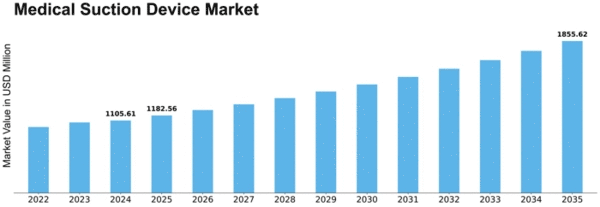

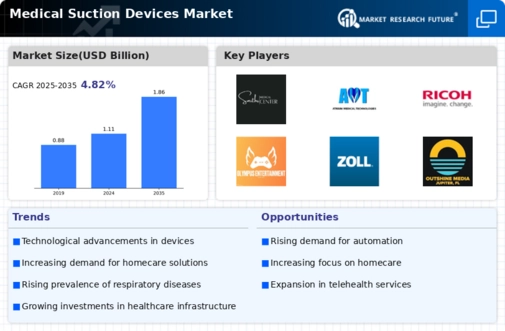

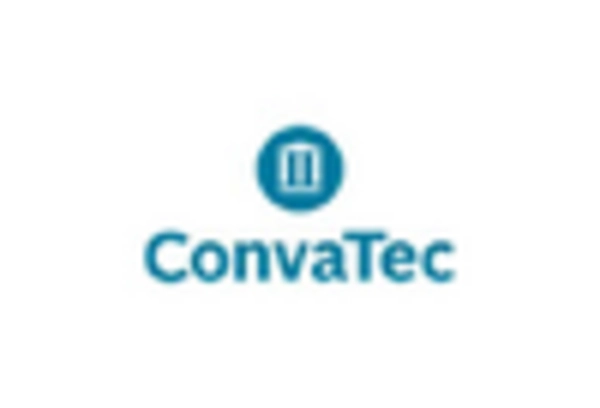
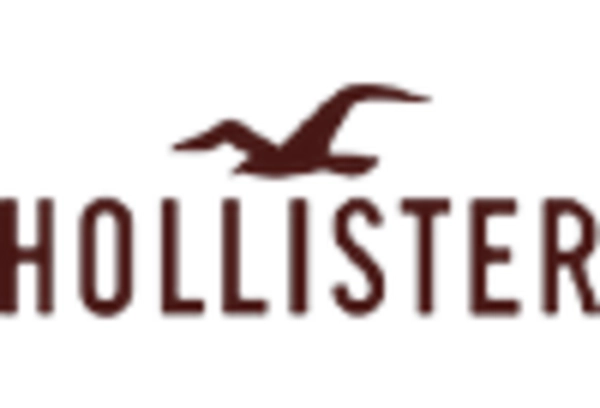

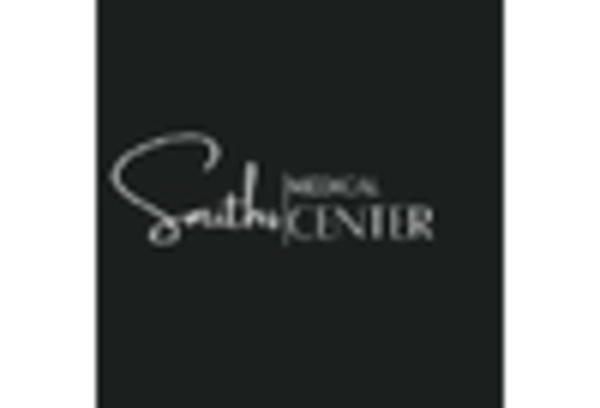
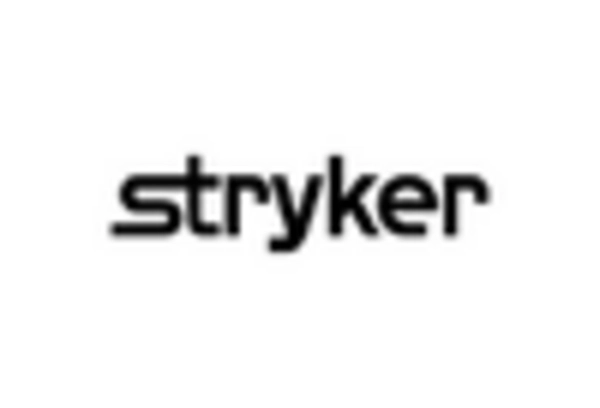









Leave a Comment